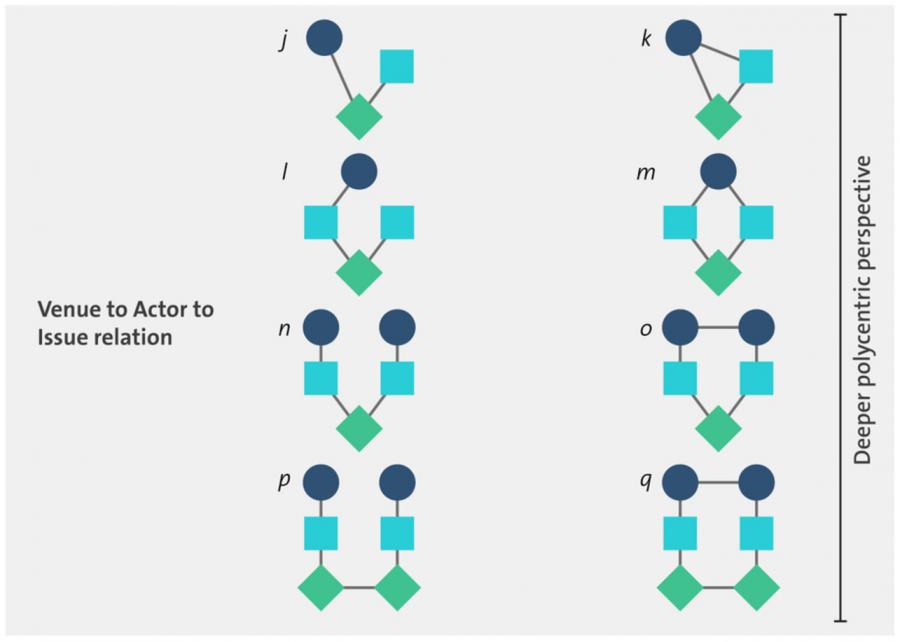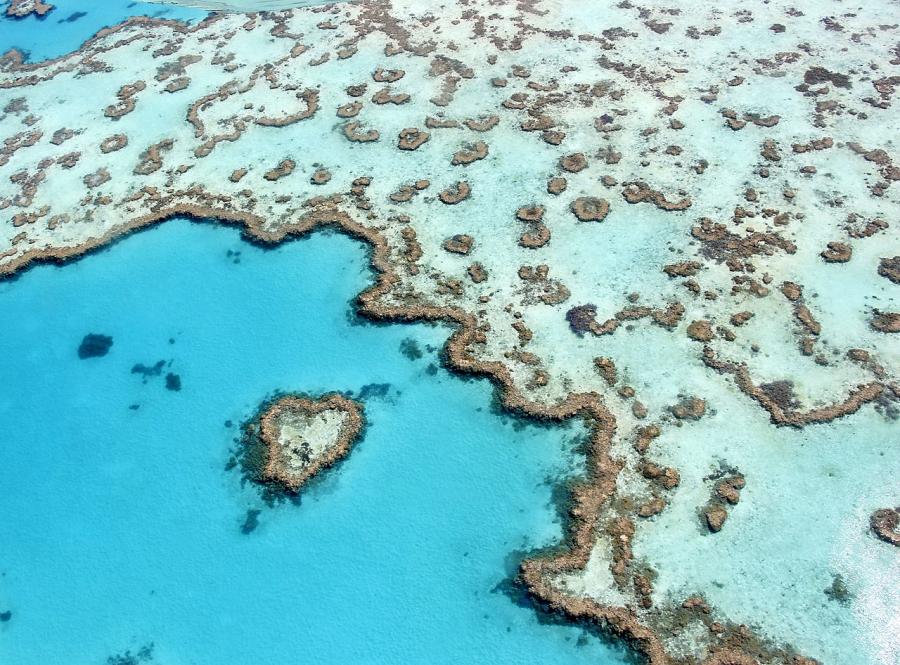The Fundamentals
Polycentric governance (PG) is a system consisting of multiple stakeholders who collaborate to govern a limited, common-pool resource. It could be any type of resource, but in the context of socio-environmental systems, a common-pool resource refers to natural resources that many people use. PG is not always successful (Fisher and Leifeld 2019, Lubell and Morrison 2021); however, research suggests that positive PG outcomes can result from a good “social fit”: the ability to reconcile diverse people’s values, beliefs, and expectations in the management of a socio-environmental (S-E) system. In other words, there can be effective negotiation between competing interests and views (Epstein et al. 2015).

Certain governance attributes, enabling conditions, and design elements can synergize to support a good social fit between stakeholders and the S-E system they regulate. These include:
- Adequate time and resources for governance and for the development of strategic alliances
- Clear communication and shared understanding among governance actors
- Benefits to diverse groups who depend on the health and viability of common pool resources
- Governance that aligns with stakeholders’ values, customs, needs, and expectations
- Mechanisms that resolve conflict and promote social learning
- Stakeholder-network-connected actors in key governance positions (Acton et al. 2021, p. 1, 4)
The goal of PG in S-E systems is to amplify the benefits of decentralized management. PG has adaptive capacity (the ability to evolve through change), social and ecological fit between governance actors and the S-E system, and institutional diversity and functional redundancy that reduce the risks of governance failure (Acton et al.). However, PG systems that lack these design elements can become mired in dysfunctional internal dynamics, process inefficiency, and disagreements that stymie effective and timely governance of changing and stressed S-E systems. The success of PG systems depends on the degree to which actors can overcome many interlinked challenges to collective action and govern in a way that sustains the S-E system.
What Are Some Examples of PG in S-E Research?
Theories and case studies of PG date back to the 1960s, with the work of Elinor and Vincent Ostrom on common-pool groundwater resources in Southern California. Their work coincided with the influential 1965 Garret Hardin essay, “On the Tragedy of the Commons,” which focuses on population growth. It argues that humans will deplete any common pool resource because the benefit to individual users to exploit the resource (e.g., groundwater or grazing areas) outweighs the social cost of defying cultures of sharing and individual restraint that guide the sustainable group-use of a limited resource. While Hardin’s essay implies that top-down management, strict regulation, and privatization are the answers to this theorized “tragedy,” the Ostroms made a counterargument. They studied how S-E resource users in seeming conflict often made choices to conserve, share, and resolve conflict using spontaneous governance structures, frequently informal ones. In her book Governing the Commons (1990), Ostrom developed simple algorithms for guiding the collective use of shared pool resources, and detailed their advantages compared to top-down government regulation and laissez-faire market solutions to governance.
As PG moves from a theoretical concept to a field with defined theory and practical guidance, researchers have further investigated the promises and pitfalls of PG.
Several prominent PG case studies focus on marine protected areas, including Hawaii’s Papahānaumokuākea Marine National Monument and Australia’s Great Barrier Reef (GBR). In the former, researchers focus on the relative success of this Monument, which brings federal, state, tribal, scientific, and environmental stakeholders into a dynamic governance relationship.
Map courtesy of NOAA, public domain.
Acton et al. examine “social fit” as a key marker of the Monument’s PG design. Specifically, they articulate three key dimensions of social fit: regulatory institutions respect the resource use-values, beliefs, and customs of affected groups; decision-making centers entertain the psychological and cultural needs of stakeholders; and the governance system has mechanisms for resolving conflict and promoting group learning (Acton et al. 17). These design elements should be present at the planning stage for PG, but they can also grow and integrate into PG systems in time—or degrade with neglect. The strongest PG systems benefit from a positive interpersonal dynamic among leaders, working groups, advisors, and a range of stakeholders who act in good faith to collaborate within their diverse governance cohort (Acton et al. 18).

Research has produced more critical appraisals of PG to sustain the GBR. For example, Morrison et al. note how rapid environmental change, especially ocean warming that leads to coral bleaching, overlaid with changing social norms, legions of stakeholders, and multiple decision-making venues, has resulted in sub-optimal PG outcomes for the GBR. They cite “fragmentation, low transparency, high transaction costs, policy incoherence, gridlock, unanticipated effects, inequities, freeloading, and ultimate compliance and implementation failure” as challenges for PG practitioners (5). This state is a de-evolution from their view of an optimal polycentric structure in the GBR c. 2005, and they set about to clarify what caused the degradation in effective PG since then.
At a SESYNC workshop, 18 researchers combined their expertise to generate S-E network diagrams. They used a new 3-tier network diagramming approach to clarify the complexity of flows among actors (stakeholders), decision-making venues, and policy needs through time. See Figure 2, below:
Among discussion of the efficacy of network diagrams to clarify complex PG dynamics, Morrison et al. draw special attention to the effect of a second, new decision-making venue (see red arrow), the UNESCO World Heritage Committee, to the longstanding venue of the Great Barrier Reef Ministerial Forum. As the diagram shows, the UNESCO venue has added development control to the policy dynamics of the GBR. Morrison et al. theorize that this venue addition resulted in shifting actors to the UNESCO venue without preserving the pre-existing links to other actors and the original venue (p. 15). GBR governance is also strained by the ongoing threat of a World Heritage in Danger listing and the chronic and intensifying impacts of climate change on reef ecology (p. 11). Their research shows the power of network diagrams to reveal the causes of the “Institutional Complexity Trap,” where PG stumbles over obstacles like increasing transaction costs, actor fatigue, entrenched interest groups, policy stagnation, and diminished efficacy of the system to address mounting climate challenges (p. 17).
Still, PG presents a viable alternative to top-down government and market-based regulation of natural resources, both of which suffer from a lack of cultural-values-awareness and stakeholder inclusion. From these marine reserve case studies, avenues for strong PG design and implementation emerge:
- PG requires stakeholders who act in good faith for the well-being of the target ecosystem and the people who rely on it.
- Stakeholders and managers possess a high level of social intelligence and communication skills, as well as a willingness to compromise.
- Crafting PG with a good social fit involves empathy and inclusion, incorporating the values, goals, and psychological needs of users.
- PG systems must evolve and integrate new actors, venues, and issues as conditions change.
- PG managers must include skilled policy innovators who can tackle emergent challenges.
References
Acton L., Gruby, R.L., & Nakachi, A. (2021). Does polycentricity fit? Linking social fit with polycentric governance in a large-scale marine protected area. Journal of Environmental Management, 290, 112613. https://doi.org/10.1016/j.jenvman.2021.112613
Epstein, G., Pittman, J., Alexander, S.M. et al. (2015). Institutional fit and the sustainability of social–ecological systems. Current Opinion in Environmental Sustainability, 14, 34-40. http://dx.doi.org/10.1016/j.cosust.2015.03.005
Fisher, D.R., & Leifeld, P. (2019). The polycentricity of climate policy blockage. Climatic Change, 155, 469–487. https://doi.org/10.1007/s10584-019-02481-y
Hardin, G. (1968). The Tragedy of the Commons. Science, 162(3859), 1243-1248. http://www.jstor.org/stable/1724745?origin=JSTOR-pdf
Lubell, M., & Morrison, T.H. (2021). Institutional navigation for polycentric sustainability governance. Nature Sustainability, 4, 664–671. https://doi.org/10.1038/s41893-021-00707-5
Ostrom, E. (1990). Governing the Commons: The Evolution of Institutions for Collective Action. Cambridge University Press. https://doi.org/10.1017/CBO9781316423936
Morrison, T.H., Bodin, Ö., Cumming, G.S. et al. (2023). Building blocks of polycentric governance. Policy Studies Journal. https://doi.org/10.1111/psj.12492

